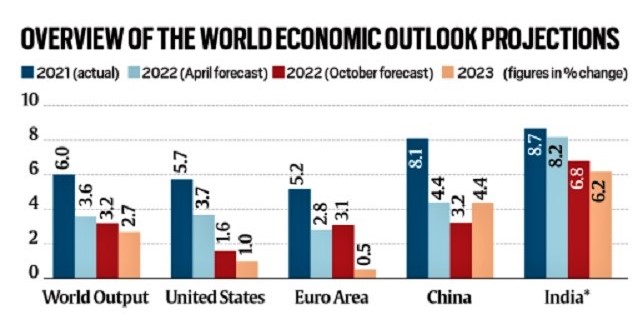7667766266
enquiry@shankarias.in
IMF’s latest World Economic Outlook (WEO) has warned that the worst is yet to come for the global economy.

References
Quick facts
Core inflation